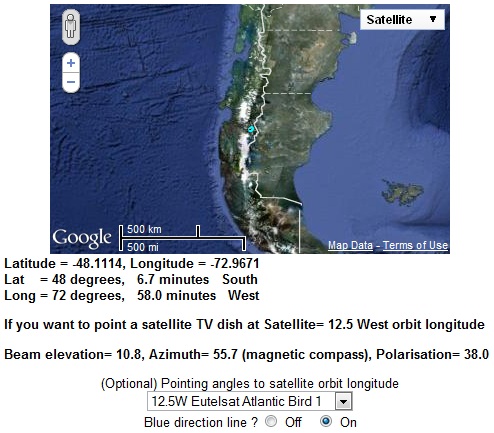| Home Login Register |
| Satellite Internet forum › HughesNet and Hughes HX VSATs › HX50 and AB1 coverage in Chile |
|
Pages: 1
|
HX50 and AB1 coverage in Chile(Read 5603 times) |
|
Ysnw
Member
★★ Offline Posts: 5 |
May 9th, 2011 at 5:43pm
|
| Back to top |
IP Logged
|
|
USN - Retired
YaBB Moderator
★★★★★ Offline Posts: 837 Kentucky (USA) |
Reply #1 - May 10th, 2011 at 1:08am
|
| Back to top |
USN (Ret)
IP Logged
|
|
Ysnw
Member
★★ Offline Posts: 5 |
Reply #2 - May 10th, 2011 at 3:59am
|
| Back to top |
IP Logged
|
|
USN - Retired
YaBB Moderator
★★★★★ Offline Posts: 837 Kentucky (USA) |
Reply #3 - May 10th, 2011 at 4:22am
|
| Back to top |
USN (Ret)
IP Logged
|
|
Ysnw
Member
★★ Offline Posts: 5 |
Reply #4 - May 10th, 2011 at 5:11am
|
| Back to top |
IP Logged
|
|
Ysnw
Member
★★ Offline Posts: 5 |
Reply #5 - May 10th, 2011 at 5:18am
|
| Back to top |
IP Logged
|
|
Admin1
YaBB Admin
★★★★★ Offline Posts: 1215 |
Reply #6 - May 10th, 2011 at 9:44am
|
| Back to top |
« Last Edit: May 10th, 2011 at 1:54pm by Admin1 »
IP Logged
|
|
USN - Retired
YaBB Moderator
★★★★★ Offline Posts: 837 Kentucky (USA) |
Reply #7 - May 10th, 2011 at 11:45am
|
| Back to top |
USN (Ret)
IP Logged
|
|
Admin1
YaBB Admin
★★★★★ Offline Posts: 1215 |
Reply #8 - May 10th, 2011 at 4:51pm
|
| Back to top |
IP Logged
|
|
Ysnw
Member
★★ Offline Posts: 5 |
Reply #9 - May 10th, 2011 at 8:40pm
|
| Back to top |
IP Logged
|
|
Pages: 1
|
Email me: eric@satsig.net
Powered by YaBB 2.5.2!
YaBB Forum Software © 2000-. All Rights Reserved.
Disclaimer, Terms of Use and Privacy Forum User Agreement Forum rules Cookie policy.





